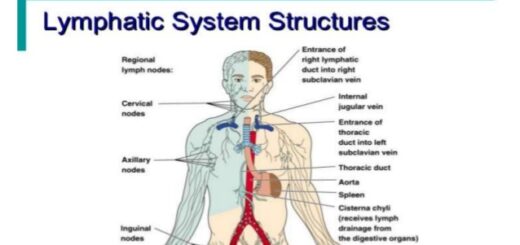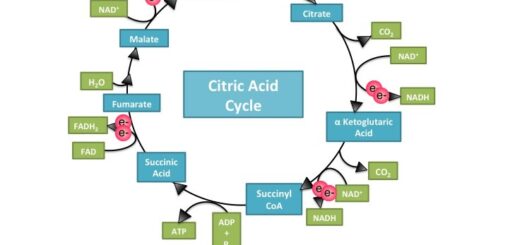Red blood cells (Erythrocytes) structure and function, Myeloid tissue and Bone marrow
Red blood cells (RBCs) are the most abundant cells of the blood and are necessary for the delivery of oxygen to the tissues, blood is considered a specialized type of connective tissue. The plasma represents the abundant matrix while the formed blood elements represent the cells. However, Blood lacks the fibrous component of connective tissue and its cells originate from the stem cells of the myeloid tissue present in the red bone marrow.
Formed blood elements
Blood smear (Blood film) is used to examine or count the formed blood elements, a blood smear must be prepared. Stains used in blood smear, Giemsa’s stain are designed to differentiate blood cells by their nuclei and cytoplasmic granules.
The blood count is the average number of a particular formed blood element per cubic millimeter blood, Recently, blood count is done by an automated hemocytometer. Accordingly, we can perform RBCs count, Total leukocytic count, Platelets count, and Differential leukocytic count.
The differential leukocytic count is the percentage of each type of leukocytes relative to the total number of WBCs. It is done by counting the different types of leukocytes in the blood smear. This count can be of diagnostic significance as it is associated with certain disease states.
Structure of red blood corpuscles
Red blood cells or erythrocytes (erythrum= red, cytes= cells) are so-called because they are responsible for the red color of blood due to their content of hemoglobin. The circulating RBCs are non-nucleated cells as they lack the nucleus. Hence, they are rather called red blood corpuscles than true cells.
Average RBC count: In normal males is 5- 5.5 million/mm3 blood. In normal females is 4.5- 5 million/mm3 blood. The life span of RBCs is about 100- 120 days. Old & deformed RBCs are recognized and phagocytosed by the macrophages in the spleen and liver.
LM picture of RBCs in blood film
- Shape: eosinophilic biconcave discs.
- Diameter: ranges between 7.2- 7.8 μm. Almost the size of the smallest blood capillaries.
- Nucleus: absent.
- Cytoplasm: hemoglobin occupies about 33% of the corpuscular volume and is more concentrated at the periphery.
EM picture of RBCs
- Shape: membrane-bounded electron-dense biconcave discs.
- Cell organelles: no nucleus and no typical organelles.
RBC membrane
It is covered from outside by a prominent glycocalyx coat, which is responsible for the blood grouping. It is supported from inside by a well-developed cytoskeleton, which is responsible for the flexibility of RBCs. It is formed of a network of microfilaments (actin & spectrin), that are attached to the plasma membrane peripheral protein (ankyrin).
Adaptation of RBCs structure to function
The histological characteristics of RBCs are designed to increase the gaseous carriage capacity of these corpuscles. These include:
- The biconcave discoid shape increases the surface area of the RBCs by 20-30% more than if they had a spherical shape.
- The lack of a nucleus and organelles allows more space in the cytoplasm for carrying the maximal amount of hemoglobin. This hemoglobin has been synthesized earlier during the process of erythrocytes formation in the bone marrow.
- The concentration of hemoglobin at the periphery more than in the center of the corpuscle facilitates its binding to oxygen and carbon dioxide gases.
- The structure of the cytoskeleton helps the RBCs to be squeezed as they pass through the narrowest blood capillaries without being damaged.
- The corpuscular membrane is selectively permeable to oxygen and carbon dioxide gases to enhance their diffusion rates during the gaseous exchange processes.
The myeloid tissue
The myeloid tissue or the red bone marrow is the tissue responsible for the formation of all formed blood elements in postnatal life. The central bone marrow cavity is in young long bones. The marrow cavities are between the bone trabeculae of cancellous bone.
Types of bone marrow
- Red-bone marrow: active in hemopoiesis.
- Yellow bone marrow: inactive bone marrow in which the blood formation has stopped. Its yellow colour is attributed to the presence of a large number of fat cells in its stroma. It can revert to the red type in stress conditions as hemorrhage and anemia.
Histological structure of myeloid tissue
The stroma includes Reticular fibers and Stromal cells. Reticular fibers form a network supporting the myeloid cells and blood sinusoids. Stromal cells represent the fixed cell population of the marrow stroma. They include Reticular stromal cells, Macrophages, and Some adipocytes.
Reticular stromal cells: their function is to produce the reticular fibers and secrete growth factors that stimulate the marrow stem cells. In the yellow bone marrow, these cells are changed to adipocytes by accumulating large fat droplets.
Macrophages: their function includes phagocytosis of aged RBCs as well as the malformed blood elements and storage of iron for further utilization in hemopoiesis. Some adipocytes represent one of the largest cells in the bone marrow.
Blood sinusoids are wide, irregular vascular channels lined by fenestrated endothelial cells. The myeloid cells represent the free cell population of the bone marrow. They include Pluripotent hemopoietic stem cells (PHSCs) and Multipotent hemopoietic stem cells (MHSCs).
Pluripotent hemopoietic stem cells (PHSCs) have a great ability to a mitotic division. They are relatively small cells with faint basophilic cytoplasm and vesicular nuclei. When they divide, they give rise to daughter cells, half of which remains as a reserve of the HPSCs population while the other half develops into the more differentiated multipotent hemopoietic stem cells (MHSCs).
Multipotent hemopoietic stem cells (MHSCs) can undergo several cell divisions, giving rise to more differentiated cell colonies for each of the formed blood elements. Hence, there are 2 types of colony-forming units (CFUs):
- Colony forming unit-lymphocyte (CFU-Ly): complete their maturation giving rise to lymphocytes.
- Colony forming unit-granulocyte, erythrocyte, monocyte, megakaryocyte (CFU- GEMM): further differentiate into the unipotent progenitors giving rise to CFU-Erythrocyte (CFU-E), CFU-Megakaryocyte (CFU-Meg), CFU-Neutrophil (CFU-G), CFU-Eosinophil (CFU-Eo), CFU-Basophil (CFU-Ba), and CFU-Monocyte (CFU-M).
These cells are larger and show more basophilia in their cytoplasm as they contain abundant ribosomes that initiate the synthesis of the specific products of each blood element.
Blood constituents & Physical properties, Sources & functions of plasma proteins
Erythropoiesis, Hemopoiesis, Hemoglobin & Roles of red cells in oxygen transport
Hemoglobin structure, review & Types of normal hemoglobin
Abnormal types of hemoglobin, Sickling of RBCs, Types & causes of methemoglobinemia
Heme biosynthesis & Disorder, Types of porphyrias, Fate of RBs & Catabolism of Hemoglobin



